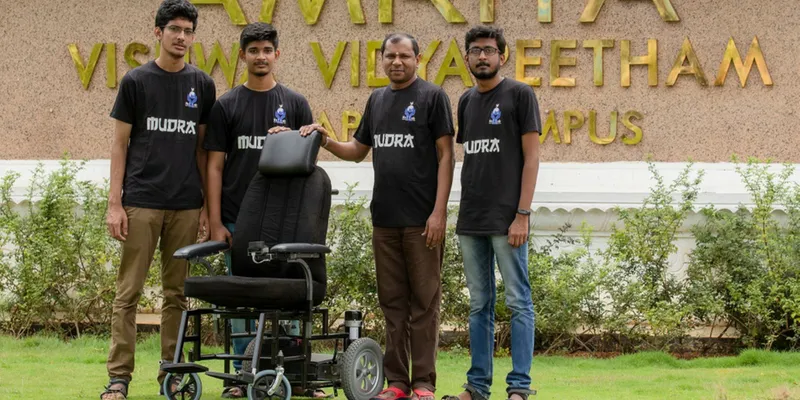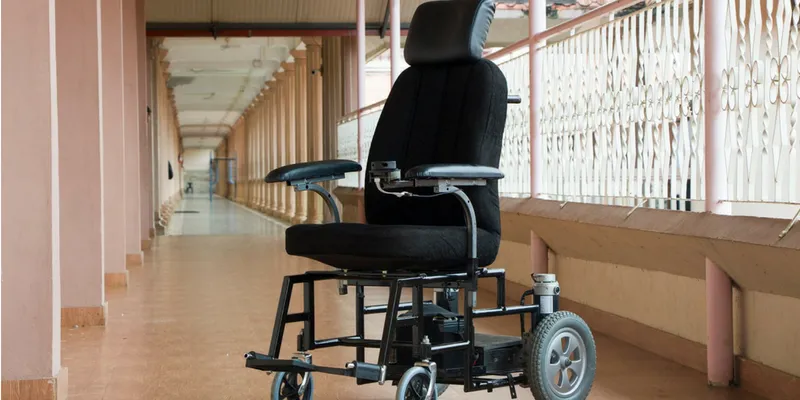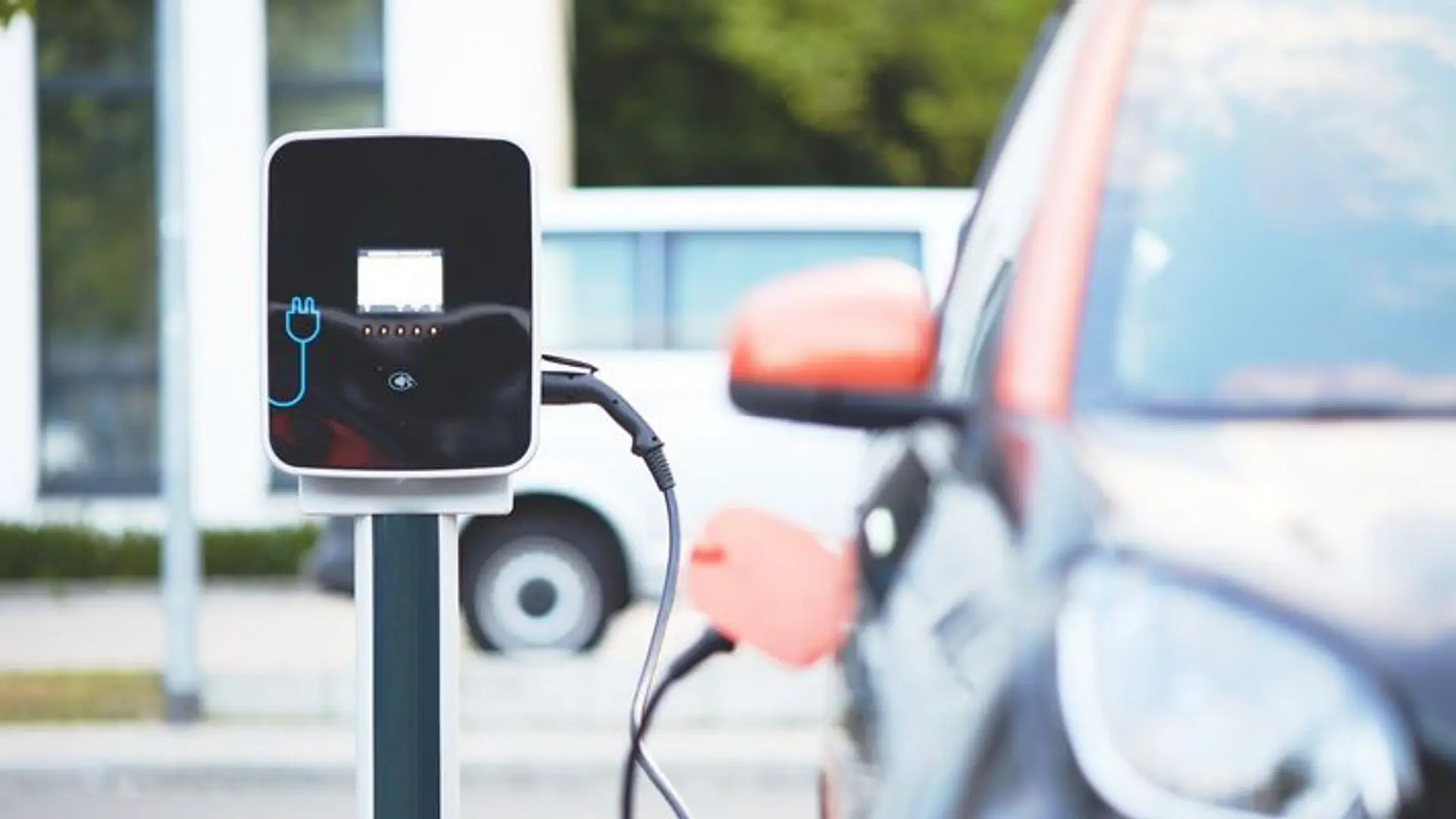Meet the students who have developed an economical self-driving wheelchair
The Self-E wheelchair uses a Robotic Operating System for navigation, and allows patients to commute from one place to another.
Three engineering students - Chinta Ravi Teja, Sarath Sreekanth and Akhil Raj - from Amrita Vishwa Vidyapeetham from Amruthapuri in Kollam district of Kerala, have developed a self-driving wheelchair. The wheelchair can safely take a user from one point to another - at a hospital, airport or even at home - in an area of 300-500 metres, by navigating its own path in an indoor environment.

The Self-E wheelchair uses a Robotic Operating System (ROS) for autonomous navigation. It creates a map of the surrounding area, along with static and dynamic obstacles, using a laser sensor called LiDAR that gets displayed on the smartphone app. The map is automatically loaded onto an Android smartphone or tablet through a specially-developed app called Mudra. The user can then touch any point of the generated map, and the wheelchair will drive to that place automatically without user intervention. The app does not need internet and is not GPS-dependent. The wheelchair runs on a battery that can be charged.
The twenty-one-year olds have been working for the last two years as junior researchers at Amrita technology hub, an in-house incubator of the college. They are working on the project to bring it to the production level, and are positive about entering the market soon.
If a patient has problem using a smartphone, a friend or family member or an assistant can use the Android app to transport them, without the need to physically push the wheelchair, says Ravi.
The team claims the prototype of the device was earlier priced at Rs 90,000, but because of new additions, the product price has now gone up to Rs 1.25 lakh. However, they are looking at modifications that will allow them to price the wheelchair at Rs 1 lakh only, says Ravi.
In order to make the user more independent, and reduce his/her dependency on others, the team worked on developing the app. The app on the phone lets the user navigate through arrows on an in-built touch screen, and also through a joy-stick.
Dr Rajesh Kannan Megalingam, Asst Professor of Electronics & Communications, and Director of Humanitarian Technology Lab at Amrita Vishwa Vidyapeetham, who mentored the undergraduate engineering students says,
The prototype is already here, and we are working with our own in-house tech lab for commercialisation and marketing. We would like as many people to benefit out of this. This is the cheapest wheelchair in the world, as we used only one LiDAR sensor, a wheelchair, and a mobile phone, and there is no other extra controlling device.
In conversation with YourStory, the team says,
Developing an algorithm for the wheelchair to perfectly map the environment and plan the correct path to the destination was the first challenge. We used the ROS to address this issue successfully. The second challenge was to avoid people and pets while the Self-E was navigating. The LiDAR sensor, along with the ROS, detects such obstacles and recalculates a new path to the destination. Making the Self-E enter and exit a door was also a difficult task, but we could succeed in this after fine-tuning the system.
The developers are, however, looking to add new features to the device to contact their family or the nearest hospital or police station in case of an emergency. The professor further adds that,
Every time a user sits on the wheelchair, they have to customize it, which will need the help of a service person. The app has to customise its mapping to every user, and all that he will need is the smartphone app and the wheelchair to navigate through. The job of a service person is to customize it for the user - loading the map, load its design and feed it to the app. It’s almost like a civil plan that can be explored by touching.

The powered-wheel chair works on three different modes:
- Automated mode - When the map is loaded, the user can navigate to any corner of the room by just touching the destination on the map.
- Fixed-automated mode – Here, the user cannot touch and navigate, but there is a point of reference and the wheelchair takes you to the spot.
- Manual mode - If it’s an unknown place and the room is not mapped, then the user can give directions on the phone by tapping it.
The three students, who have graduated from the university, are currently busy with their college placements. They are, however, looking forward to representing themselves in maker fares, exhibitions, and innovation-driven events.







